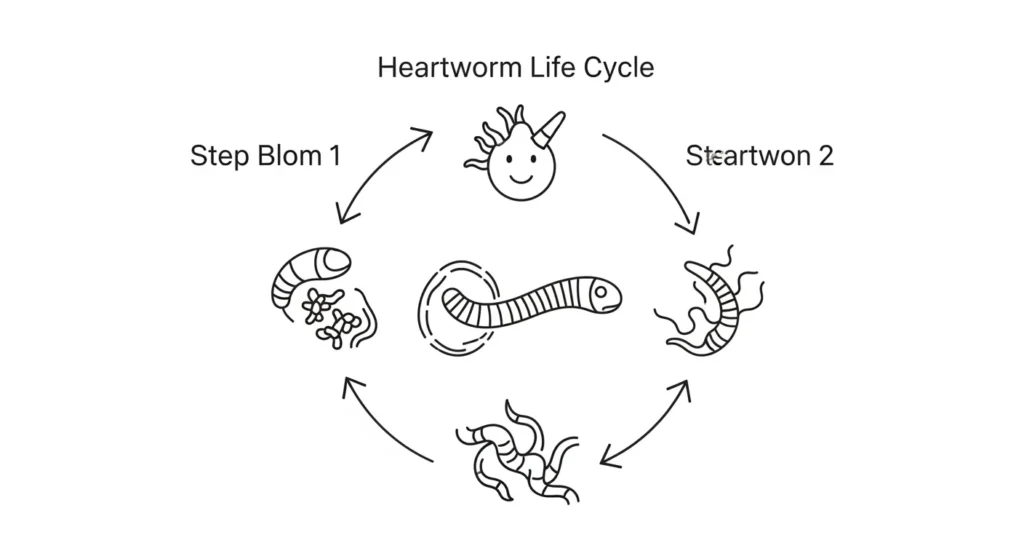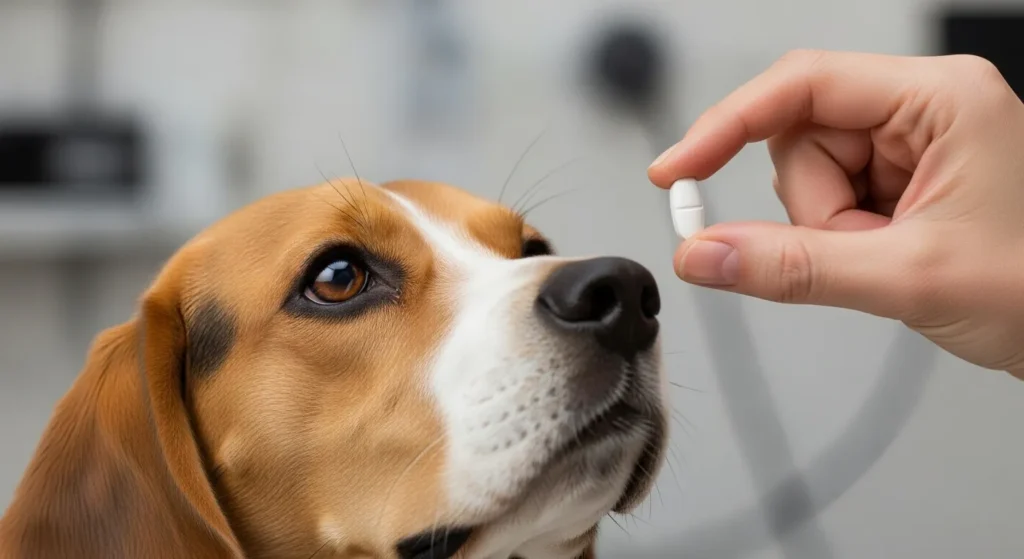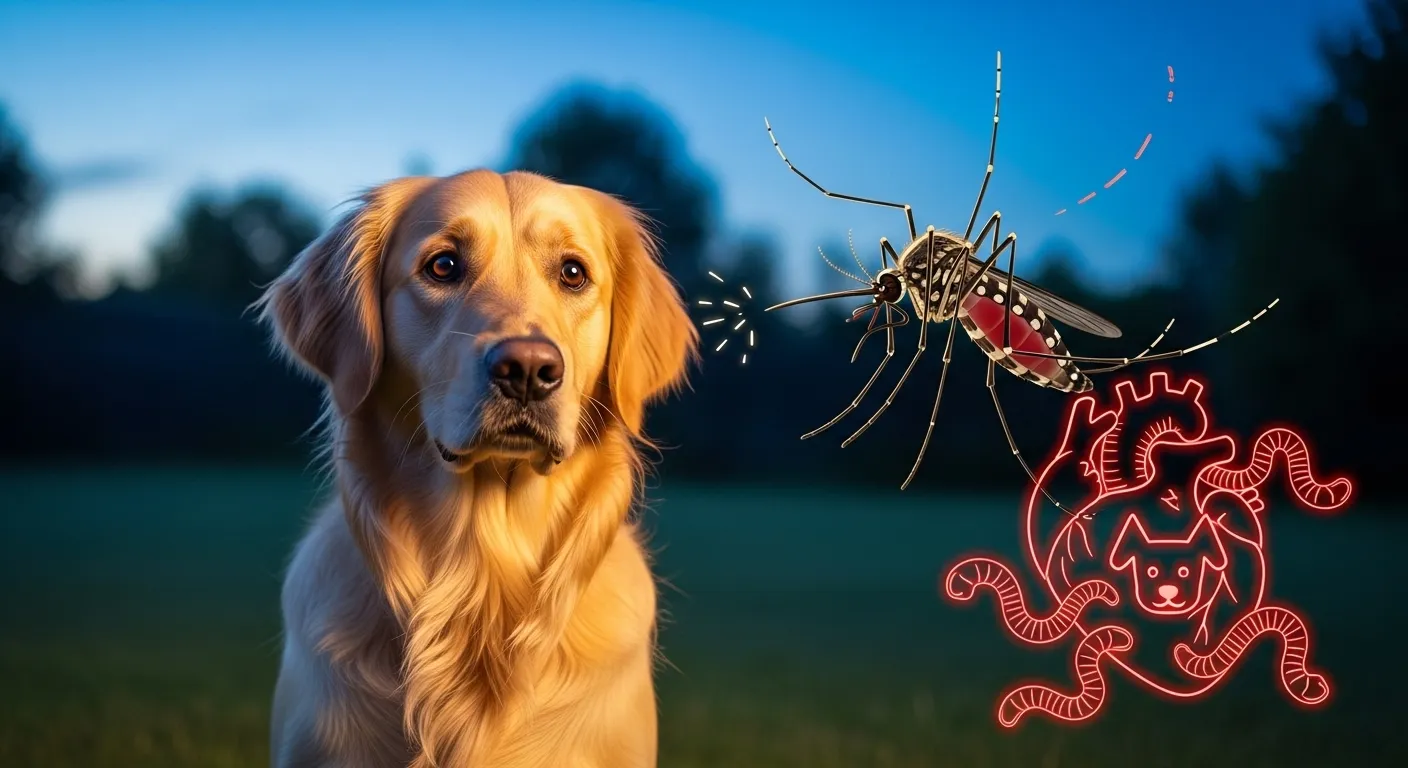Heartworm disease affects dogs across the country. It comes from a parasite that lives in the heart and blood vessels. This guide explains how dogs catch it. You will learn about the spread, signs to watch for, and steps to keep your dog safe. All facts come from the latest 2025 guidelines by the American Heartworm Society.
What Is Heartworm Disease?
Heartworm disease starts with a worm called Dirofilaria immitis. These worms grow up to 12 inches long. They live in a dog’s heart, lungs, and nearby blood vessels. The disease harms the lungs and heart over time. If left alone, it can lead to death.
Dogs act as the main host for these worms. Adult worms mate inside the dog. They make baby worms called microfilariae. These babies float in the blood. Mosquitoes pick them up during bites. The cycle keeps going from there.
This problem shows up in all 50 states. Warm areas see more cases. But cold spots have them too, thanks to travel and changing weather. Indoor dogs can get it if a mosquito gets inside.
How Do Dogs Get Heartworm?
Dogs get heartworm from mosquito bites. It does not pass dog to dog directly. No other way spreads it.
Here is what happens. A mosquito bites a dog with heartworms. It takes in the microfilariae from the blood. Inside the mosquito, these babies change. They turn into larvae over 10 to 14 days. Warm weather speeds this up. Cool temps slow it down.
The mosquito then bites your dog. It leaves the larvae on the skin. The larvae burrow in. They travel through the body to the heart and lungs. This trip takes days. The worms grow into adults in about six months.
One bite can infect a dog. Even short outdoor time counts. Mosquitoes bite at dawn and dusk most. But they fly anytime in mild weather.
- Bites from infected mosquitoes inject larvae.
- Larvae move to heart and lungs.
- They mature and start the cycle again.
For more on dog health checks, try our pet symptom checker.
The Life Cycle of Heartworms in Dogs
The full cycle takes months. Start with the mosquito. It picks up microfilariae. The babies grow in the mosquito’s gut. They become third-stage larvae ready to infect.
When the mosquito bites, larvae enter the dog’s skin. They stay under the skin for a bit. Then they go to blood vessels. From there, to the heart. In the lungs, they settle in arteries.
Over five to seven months, larvae become adults. Females make more microfilariae. These go back to the blood. A new mosquito bite starts it over.
Adult worms live five to seven years in a dog. They cause swelling in vessels. Blood flow gets blocked. Lungs take damage first. Heart works harder next.
Changes in weather make the cycle longer in some places. Urban heat keeps mosquitoes active year-round.

Signs of Heartworm in Dogs
Early heartworm shows no signs. Larvae grow quiet at first. Problems start when adults settle in.
Common signs include:
- A cough that sounds dry.
- Trouble breathing after play.
- Less energy or tiring fast.
- Weight loss without reason.
- Belly swells from fluid.
Heavy infections cause fainting or collapse. Dogs may act restless at night. Coughing worsens with exercise.
Puppies and small dogs show signs sooner. Big breeds hide them longer. Check your dog if it coughs or slows down. Use our pet symptom checker to spot issues early.
Severe cases lead to heart failure. Blood clots block lungs. Sudden death happens in bad spots.

Diagnosing Heartworm Disease
Vets use tests to find heartworm. A blood test checks for worm proteins. This antigen test spots adults. It works best six months after infection.
Another test looks for microfilariae in blood. It confirms active spread.
If tests miss it, vets do X-rays. These show lung changes. Ultrasound checks the heart. Blood work sees if organs hurt.
Test all dogs over seven months old each year. Puppies start at six to eight weeks. New dogs need a test before prevention meds.
The 2025 guidelines stress yearly checks. False negatives happen in low worm counts. Talk to your vet about heat treatment for tricky cases.
Treating Heartworm in Dogs
Treatment kills the worms but does not fix all damage. It takes months and costs more than prevention.
The main drug is melarsomine. Vets give three shots. First one, then two more a day apart after a month. This kills 99% of adults.
Before shots, dogs get doxycycline for four weeks. It fights bacteria that help worms. Keep the dog calm during treatment. No running or jumping. This cuts risks like clots.
After, meds kill baby worms. Watch for cough or fever. Most dogs recover well. But lungs stay scarred.
For bad cases, surgery removes worms from heart. Slow-kill uses monthly meds. It works but takes longer and risks more issues.
See a vet right away if you suspect it. For other heart issues in dogs, read our guide on dilated cardiomyopathy.
Preventing Heartworm Disease
Prevention beats treatment every time. Give meds monthly. Start at eight weeks old. Use ones with ivermectin, milbemycin, or moxidectin. They stop larvae from growing.
The American Heartworm Society says use them year-round. Mosquitoes hide in winter homes. Test first for adult dogs.
Add mosquito control. Use collars or sprays that kill bugs. Clear standing water in yards. Stay inside at dusk.
In high-risk areas, combine meds with bug killers like isoxazolines. This cuts mosquito numbers.
Puppies need early starts. Travel dogs face new risks. Check labels and vet advice.
For safe food tips during recovery, visit our pet food safety checker.

Common Questions About Heartworm in Dogs
Can dogs get heartworm indoors? Yes. Mosquitoes slip through screens or doors. One bite does it.
How long until heartworm shows up? Larvae take six months to become adults. Signs may wait longer.
Is heartworm fatal? Yes, if not treated. Prevention stops it cold.
What if my dog travels? Test before and use meds daily. Risks rise in warm spots.
For more on dog care mistakes, see our common dog owner mistakes post.
Learn more from the American Heartworm Society or FDA facts on heartworm.
Keep your dog tested and medicated. It saves lives. If you see signs, act fast with a vet visit.
